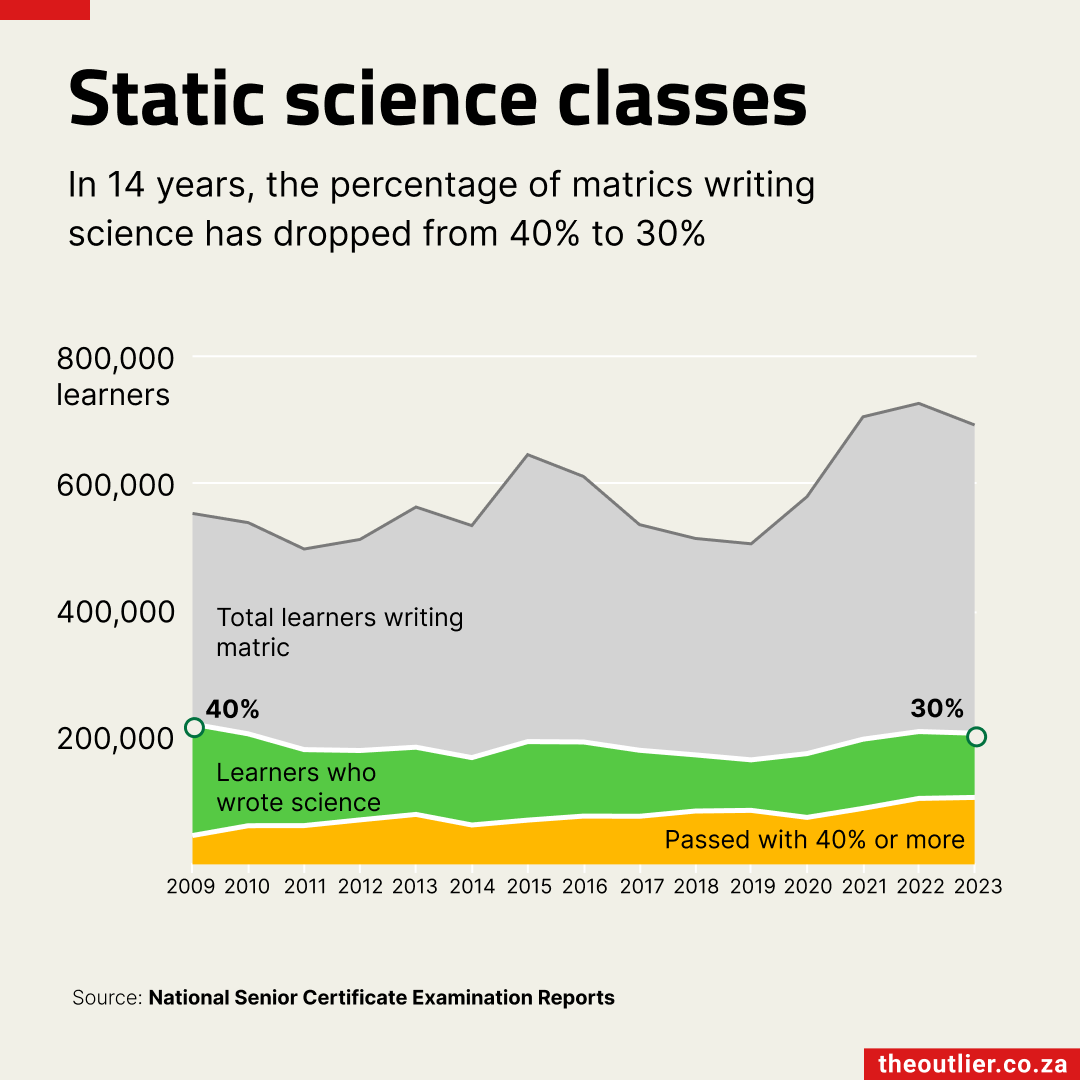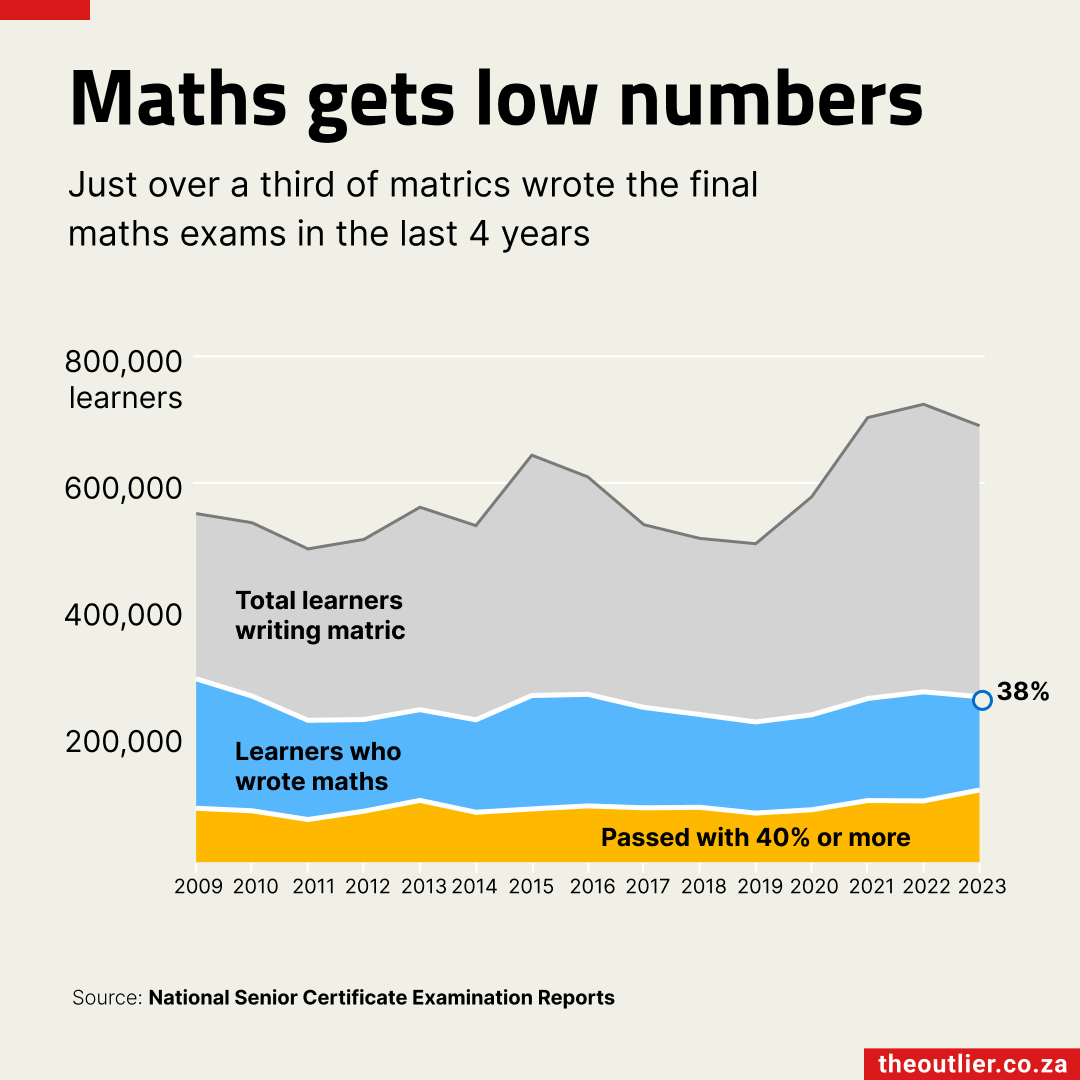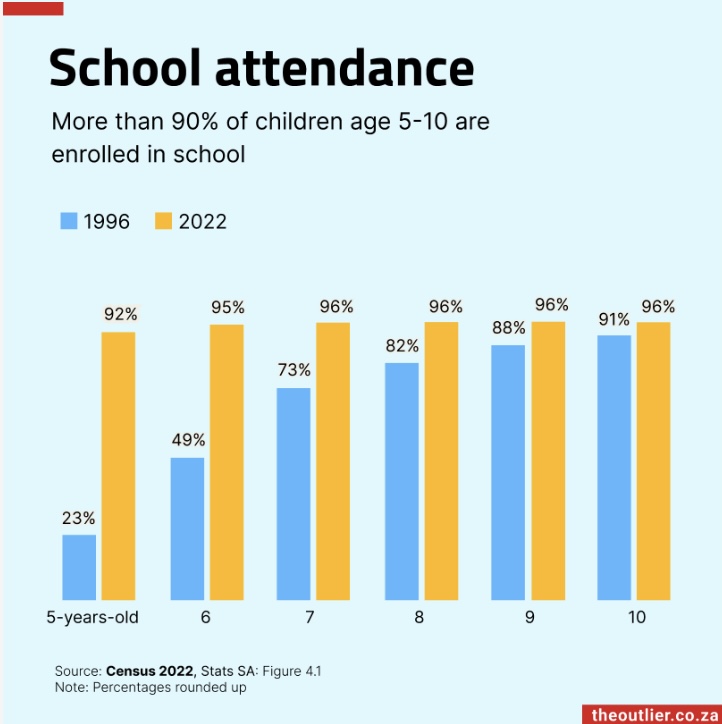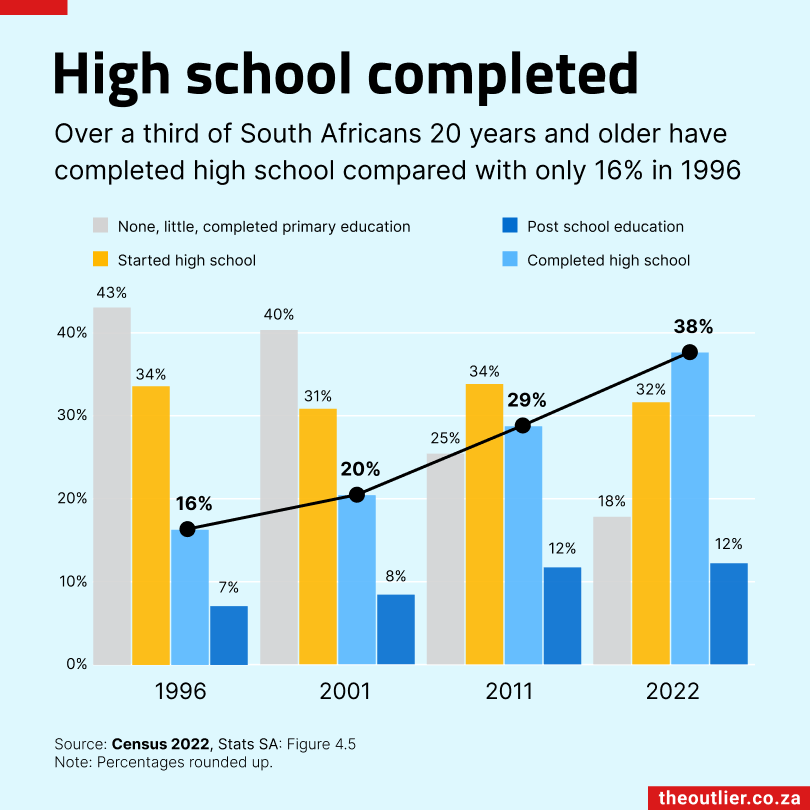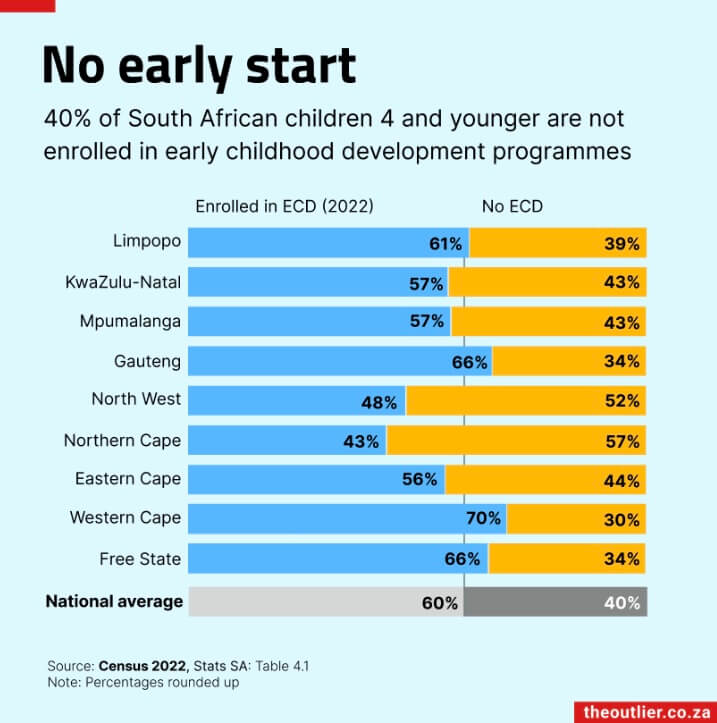Matrics in 2021 buck school drop-out trends
Grade 12s did not drop out of the system because of Covid-19, in fact more pupils wrote the exams, and the pass rate improved on 2020’s.
School children reading a book in the Gonubie Library. Photo: Gemma Ritchie/The Outlier
For the past six years, the progression of learners from grades one to grade 12 in South Africa’s public schools has followed a similar pattern: one of its key features is a drop off of roughly 30% in the number of learners enrolled between grades 11 and 12.
The 2021 matric class – with more than 700,000 pupils, the largest in six years – has broken that pattern.
https://school-dropouts-2022.vercel.app/The grade 12 class of 2021 was only 14% smaller than the grade 11 class in 2020 (see the red line on the chart above). In fact, there were over 100,000 more grade 12s in 2021 than there were in 2020.
Despite the larger number of grade 12s and the disruptions they experienced in their last two years of school because of the Covid-19 pandemic conditions, the pass rate for the National Senior Certificate (NSC) exams increased to 76.4% from 76.2% last year.
There had been an expectation that more children would drop out of the schooling system for reasons related to the Covid-19 pandemic.
For example, at a media briefing on 11 January, Mathanzima Mweli, the director general of the Department of Basic Education, said that it had been projected that between 150,000 and 700,000 children might have dropped out of the system because of Covid-19 in the 2021 school year.
But an analysis of school enrolments data by Martin Gustafsson published in October last year found that there was no evidence of large numbers of pupils disengaging from the schooling system, particularly among learners over the age of 15, the age up to which it is compulsory to attend school.
“The enrolment data indicate that the pandemic led to increased enrolment at that level, especially in grade 12,” Gustafsson noted.
Granted, being enrolled in a grade does not guarantee that a pupil actually attended school, but in the case of the grade 12 class, one can assume that if they enrolled to write the NSC exams, they’re unlikely to have disengaged. Only 6% of learners who enrolled in grade 12 in 2021 did not write the NSC exams. This is the lowest percentage since 2015.

At the January media briefing, Mweli also said that one of the reasons for this increase in the number of grade 12s could be that the department’s assessment policy changed. When the 2021 matrics were in grade 11, instead of relying on exams for 75% of the year mark and school-based assessments for 25%, exams were worth 40% of the marks and school-based assessments made up the remaining 60%.
This interim policy was introduced in December 2020 to alleviate the impact of the Covid-19 lockdown on that year’s grade 11s, and it is unclear if it will remain in place for the 2022 Grade 11s.
Gustafsson also noted in his research on the impacts of the Covid-19 pandemic on school enrolments that there was a sharp increase in the average age of grade 12 learners, which he said pointed to an increase in grade repetition.

How many pupils dropped out in 2020 and 2021?
The easy answer is no-one really knows.
The data from seven years of the Department of Education’s School Realities Reports show that enrolment patterns have changed very little over the years.
The big drop in learner numbers between grades 1 and 2 remains. As does the increase in the number of learners between grade 7, the last year of primary school, and grade 8, the first year of high school.
The spike in numbers enrolled in grade 10 also remains. A study done in 2018 found that 27% (a third) of Grade 10 learners were repeaters. After grade 10 there is usually a big drop off in learners.
Between 2014 and 2020 the number of grade 12s enrolled in public schools was roughly half (between 51% and 55%) the number of grade ones enrolled 12 years previously. This suggests that between 45% and 49%) of the grade ones during that period didn’t make it to matric in the standard 12 years. In 2021, the grade 12 class was 66% of the size of the grade one class 12 years previously in 2010.
It doesn’t mean that those children have dropped out of school, many could still be in the schooling system repeating grades.
For a more detailed look at the progression of learners through grades 1 to 12, see our 2018 project: Twelve Years in South Africa’s schools.
What does the data say?
There is a problem with the data available on school drop outs.
“The data [collected through the Learner Unit Record Information Tracking System] is full of inaccuracies and gaps,” said Rahima Essop, spokesperson for the Zero Drop Out Campaign.
“Even though you are supposed to have unique identifiers for learners, what happens is that the learners aren’t followed throughout the system. For instance, if a learner leaves school A and goes to school B in a different province, they might register as a school dropout when in fact they are in another province.
“Because of those inconsistencies and gaps, it makes it really difficult to get an accurate handle on the dropout picture in South Africa,” said Essop.
Learners who leave the schooling system to enter technical and vocational education and training (TVET) colleges or learnerships offered by SETAs (Sector Education and Training Authorities) are also not accounted for, education researcher Nicky Roberts pointed out.
Exam results under Covid conditions
Stellenbosch University’s Professor Servaas van der Berg told The Outlier that the coronavirus pandemic had made it difficult for matric results to be based on the historical baseline. Van der Berg focuses on the economics of education and he served on the Scientific Advisory Committee of the Southern and Eastern African Consortium for Monitoring Educational Quality.
Before the pandemic, “Learners would do a little better or a little worse in comparison to previous years, but there were never major changes,” he said.
Now with two matrics writing under the constraints of global pandemic, there is no historical baseline to compare the grade 12’s results.
“What we have seen is that schools are better at preparing learners for exams. If they have been successful with that, it may to some extent explain the high pass rates, but the high bachelor pass rate [36.4%] raises questions about how well students can access university,” said Van der Berg.
It looks like 2022’s grade 12 class is bigger than last year’s. According to data from the Department of Education, 825,078 learners have enrolled in grade 12 at both public and independent schools this year – compared with 750,478 in 2021.
About 95% of those learners are in public schools.
Data sourced from the School Realities Reports for 2004, 2005, 2006, 2007, 2008, 2009, 2010, 2011, 2012, 2013, 2014, 2015, 2016, 2017, 2018, 2019. The reports for 2020 and 2021 were provided by the Department of Education’s EMIS.

